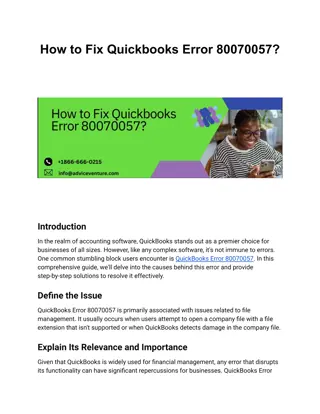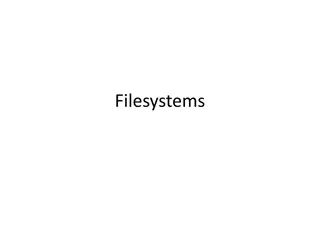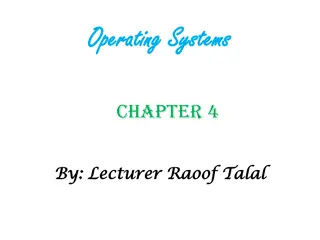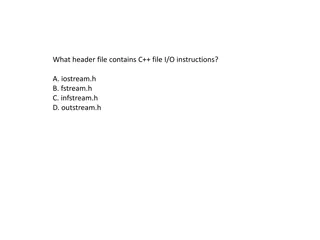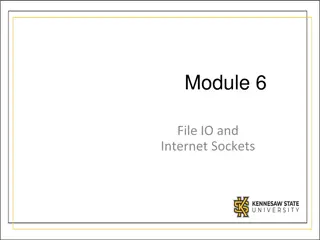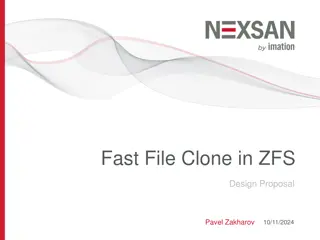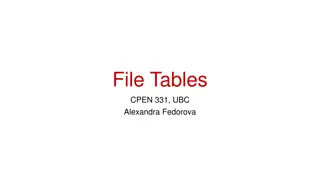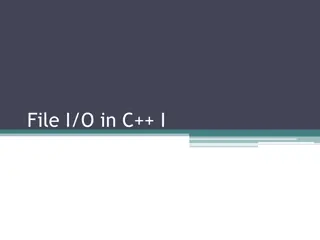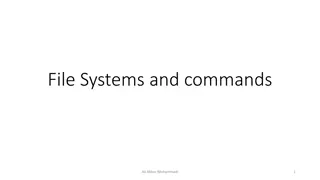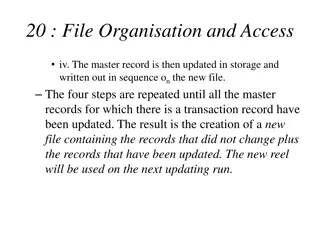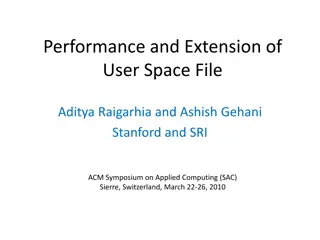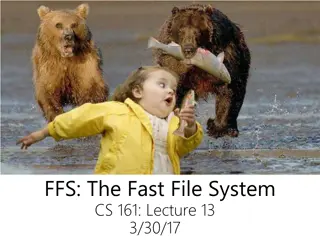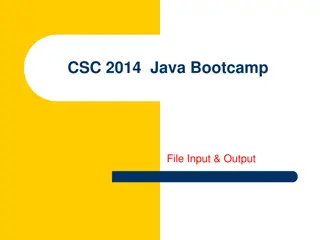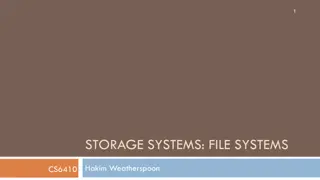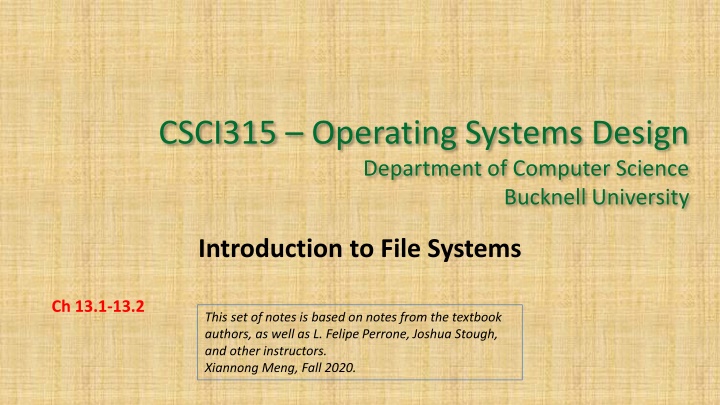
File System Design Overview at Bucknell University
Explore the concepts of file systems in operating systems design as taught at Bucknell University. Learn about file structures, attributes, operations, and more in this insightful overview.
Download Presentation

Please find below an Image/Link to download the presentation.
The content on the website is provided AS IS for your information and personal use only. It may not be sold, licensed, or shared on other websites without obtaining consent from the author. If you encounter any issues during the download, it is possible that the publisher has removed the file from their server.
You are allowed to download the files provided on this website for personal or commercial use, subject to the condition that they are used lawfully. All files are the property of their respective owners.
The content on the website is provided AS IS for your information and personal use only. It may not be sold, licensed, or shared on other websites without obtaining consent from the author.
E N D
Presentation Transcript
CSCI315 Operating Systems Design Department of Computer Science Bucknell University Introduction to File Systems Ch 13.1-13.2 This set of notes is based on notes from the textbook authors, as well as L. Felipe Perrone, Joshua Stough, and other instructors. Xiannong Meng, Fall 2020.
File System Topics File Concept Access Methods Directory Structure File System Mounting File Sharing Protection File System Implementation File System Internals
File Concept A file is a named collection of related information recorded on secondary storage. Contiguous logical address space. A collection of bytes, of which the meaning is interpreted by the applications. File types: Data Programs (source code and executable) Files are objects with attributes and operations
Types of File Structures None: just a sequence of words or bytes, such as files on Linux Simple record structure such as database files: Lines, Fixed length, Variable length. Complex Structures: Formatted document, Relocatable load file. Can simulate last two with first method by inserting appropriate control characters. Who decides: Operating systems, Programs.
File Attributes Name only information kept in human-readable form. Type needed for systems that support different types. Location pointer to file location on device. Size current file size. Protection controls who can do reading, writing, executing. Time, date, and user identification data for protection, security, and usage monitoring. maintained on the disk by the operating system. Information about files is kept in the directory structure, which is
File Operations Create create a new file Write write some data into an existing file Read read some data from an existing file Seek move the read/write point to a specific position Delete remove the file from the file system Truncate remove a portion of data, keep current attributes Open open an existing file, get it ready for operations Close close an existing file, no further operations can be applied to a closed file
File Operation Example in C #include <stdio.h> #include <stdlib.h> [xmeng@linuxremote1 files]$ cat hello.txt Hello World! How are you? [xmeng@linuxremote1 files]$ gcc file-basics.c [xmeng@linuxremote1 files]$ ./a.out Hello World! How are you? [xmeng@linuxremote1 files]$ int main() { FILE * fp; char ch; fp = fopen( hello.txt", "r"); /* open file hello.txt' for read */ if (!fp) { fprintf(stderr, "error in opening file\n"); exit(2); } fscanf(fp, "%c", &ch); while (!feof(fp)) { /* if not end of the file, continue */ /* reading and printing one char at a time */ printf("%c", ch); fscanf(fp, "%c", &ch); } fclose(fp); return 0; } http://www.eg.bucknell.edu/~cs315/ F2020/meng/code/files/file-basics.c
Use System Calls /* only the essential part is listed */ int main() { int fp; char ch; int bytes_read = 0; [xmeng@linuxremote1 files]$ cat hello.txt Hello World! How are you? [xmeng@linuxremote1 files]$ gcc file-syscalls.c [xmeng@linuxremote1 files]$ ./a.out Hello World! How are you? [xmeng@linuxremote1 files]$ fp = open("hello.txt", O_RDONLY); /* error check removed for presentation */ bytes_read = read(fp, &ch, sizeof(ch)); while (bytes_read > 0) { printf("%c", (char)ch); bytes_read = read(fp, &ch, sizeof(ch)); } } http://www.eg.bucknell.edu/~cs315/F2020/meng/code/files/file-syscalls.c
Linux Files Linux files are just a sequence of bytes, regardless of the types. Here are two examples of files, one is a text and the other is an image. (See next slide for details.) hello.txt is a text file with 26 characters (bytes) in it. base-small.png is a small random image file (a small blue square) of 125 bytes in size.
Linux Files Sequence of Bytes how the image base-small.png looks byte content of base-small.png (125 bytes) logical addresses of the file content byte content of hello.txt (26 bytes) size of the files
Access Methods Sequential Access read next write next reset Direct Access read n write n position to n rewrite n read next write next n = relative block number
Sequential-access File Where does the term rewind come from? It was from tape-based file storage medium in old days!
Sequential Access Files Because most files are logically organized in sequence, accesses are in sequence. Linux files can be directly accessed through the operation of lseek() (see man lseek)
Linux lseek(3) Example fp = open("hello.txt", O_RDONLY); lseek(fp, 6, SEEK_SET); // move forward 6 bytes // "Hello world!" so we should read 'w' now bytes_read = read(fp, &ch, sizeof(ch)); printf("char read = ['%c']\n", ch); Only relevant segment is shown here. For the complete program, see http://www.eg.bucknell.edu/~cs315/F2020/meng/code/files/file-lseek.c
Example of Index and Relative Files

